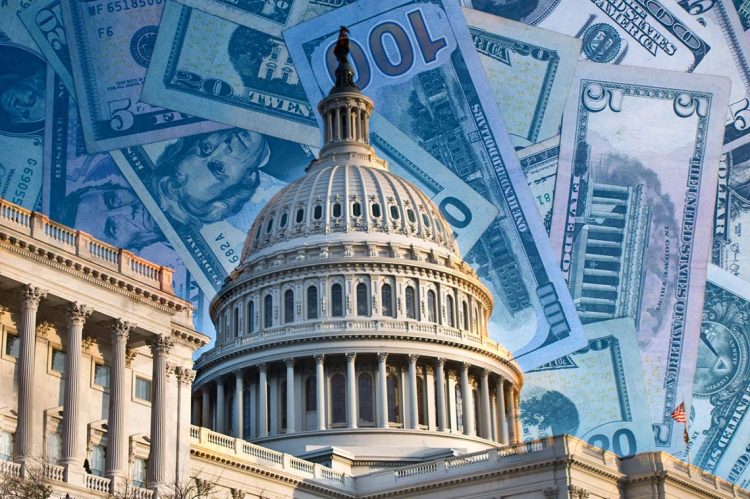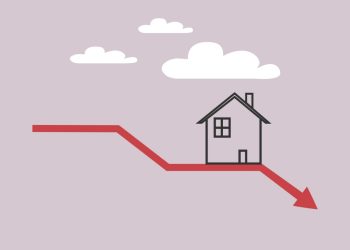As two enormous spending bills percolate in Congress stalled by political maneuvering, intra-party disputes or partisan non-cooperation, there is very little certainty about the future of the legislation—whether it will pass at all, or what provisions will survive ongoing negotiations.
The Infrastructure Investment and Jobs Act, which is focused mostly on so-called “hard infrastructure” like roads and energy, is less relevant to the real estate industry, though it would certainly have broad ramifications if passed. The Build Back Better Act, introduced last month in the House, has a much broader reach and includes more than $300 billion for housing.
While Congress attempts to find a way forward on the bills, here are some of the current proposals in Build Back Better that are very likely to affect the real estate industry—again, with no guarantee that any will survive to final passage, at least as they are proposed.
$90 Billion for Section 8
These monies would go directly into the Section 8 program. A large portion—around $72 billion—would go to the voucher program which subsidizes very low-income renters or those who are at an immediate risk of homelessness, domestic violence or human trafficking. Other amounts would be steered toward landlords to create or rehab rental housing in areas where people are likely to be displaced or already struggle to find housing.
The bill does not include any requirements or mandates that landlords accept Section 8 voucher assistance—something the National Association of REALTORS® (NAR) has opposed. Those utilizing Section 8 often face discrimination when looking for housing.
$80 Billion for Public Housing
The Build Back Better bill would provide a large investment in the current Housing and Urban Development (HUD) programs that fund the majority of affordable housing, income-restricted across the country, mostly through public-private partnerships. Much of that program has focused on rehabilitation or repurposing existing housing, though this money can also be used for maintenance, upgrades, energy efficiency improvements and homeownership programs.
A letter to Congress that was signed by over 100 housing advocates and organizations including NAR voiced strong support for “investing in the rental and homeless portions of the Budget Reconciliation Bill,” as well as urging Congress not to ” one part of the marketplace for another.”
$10 Billion for First-Time Homebuyers
In the current form, much of the money would go directly to homebuyers as down payment grants. It would be restricted to people whose parents were not homeowners—though this criteria and other aspects of the program have already been publicly debated by Democrats. About $7 billion would go to state governments and $2.25 billion would be provided to non-government entities through a “competitive” process, who would then disburse the money. The amount of down payment per homebuyer would not exceed either $20,000 or 10% of the purchase price. If the homebuyer abandons the property within five years, they will have to repay the grant.
NAR spoke favorably about proposals for first-time homebuyer tax credits when they were initially discussed early this spring, and signed a letter this month urging Congress to support this proposal. Real estate agents have also generally felt positively about down payment assistance programs, with Florida REALTORS® recently lobbying to enshrine monies for affordable housing (including down payment assistance) in the state’s constitution.
$5.3 Billion for Rural Housing
NAR has lobbied in the past for “federal programs for home loans, rental development and rental assistance.” The bill splits funds, with about $1 billion for mortgage assistance in rural communities and about $4.3 billion to “revitalize” rentals in these areas.
$4.3 Billion for the “Unlocking Possibilities Program”
Meant to encourage better land use and planning, these monies would go as grants to state or local governments and regional authorities to come up with strategies to further fair housing goals, focused specifically on growth, reducing concentrations of poverty, finding efficiencies and removing barriers. This can explicitly include things like zoning reform—part of executive action and policy taken by the Biden’s administration earlier this year that NAR explicitly supported.
$4 Billion for Distressed Multifamily Housing
This money would be provided as forgivable loans that explicitly could only be used for “necessary physical improvements” to a distressed multifamily property. Loans can be forgiven at the discretion of the Secretary of HUD. Owners of these properties must also make their rents affordable for 30 years if they participate in the program.
NAR generally supports multifamily loan programs, and has stated that it supports federal involvement in multifamily mortgage markets and the rehabilitation or refinancing of rental housing projects.
$4 Billion for Flood Resilience
One billion would go directly to homeowners based on financial need to offset the cost of their flood insurance—especially timely now as premiums are likely to rise for many homeowners over the next few years. The other $3 billion would go toward larger projects such as risk assessments and flood mapping.
$2.8 Billion for Minority-Owned Businesses
Of the total funding, $1.5 billion would go as direct grants to businesses owned by underrepresented groups, which includes people from low-income communities, those with disabilities, veterans, refugees, members of native tribes and people who have served prison time. The rest of the money would fund an agency that would permanently serve minority-owned businesses, opening centers across the country and holding forums with government agencies. Minority-owned real estate businesses would almost certainly be included in these programs based on the current language.
Other Takeaways
The Build Back Better bill also includes significant money for transportation improvements, re-routing streets and removing lead paint from housing, all of which could have significant effects on real estate markets. Twenty-five billion is also going to the Small Business Administration including money for the popular 7(a) microloan program, which serves many real estate businesses.
Also notable is what the house bill did not end up including. The bill fails to close two tax loopholes—the so-called carried interest loophole and like-kind exchanges. The carried interest loophole allows taxpayers to pay a much lower rate on capital gains compared to straight income, and like-kind exchanges involve deferring taxes when exchanging investment properties. NAR has lobbied against changing these practices, which largely benefit very wealthy individuals, arguing that they are not loopholes and promote business growth, while some politicians on both sides of the aisle see them as contributing to massive wealth inequality.
This is a developing story. Stay tuned to RISMedia for updates.
 Jesse Williams is RISMedia’s associate online editor. Email him your real estate news ideas to jwilliams@rismedia.com.
Jesse Williams is RISMedia’s associate online editor. Email him your real estate news ideas to jwilliams@rismedia.com.












